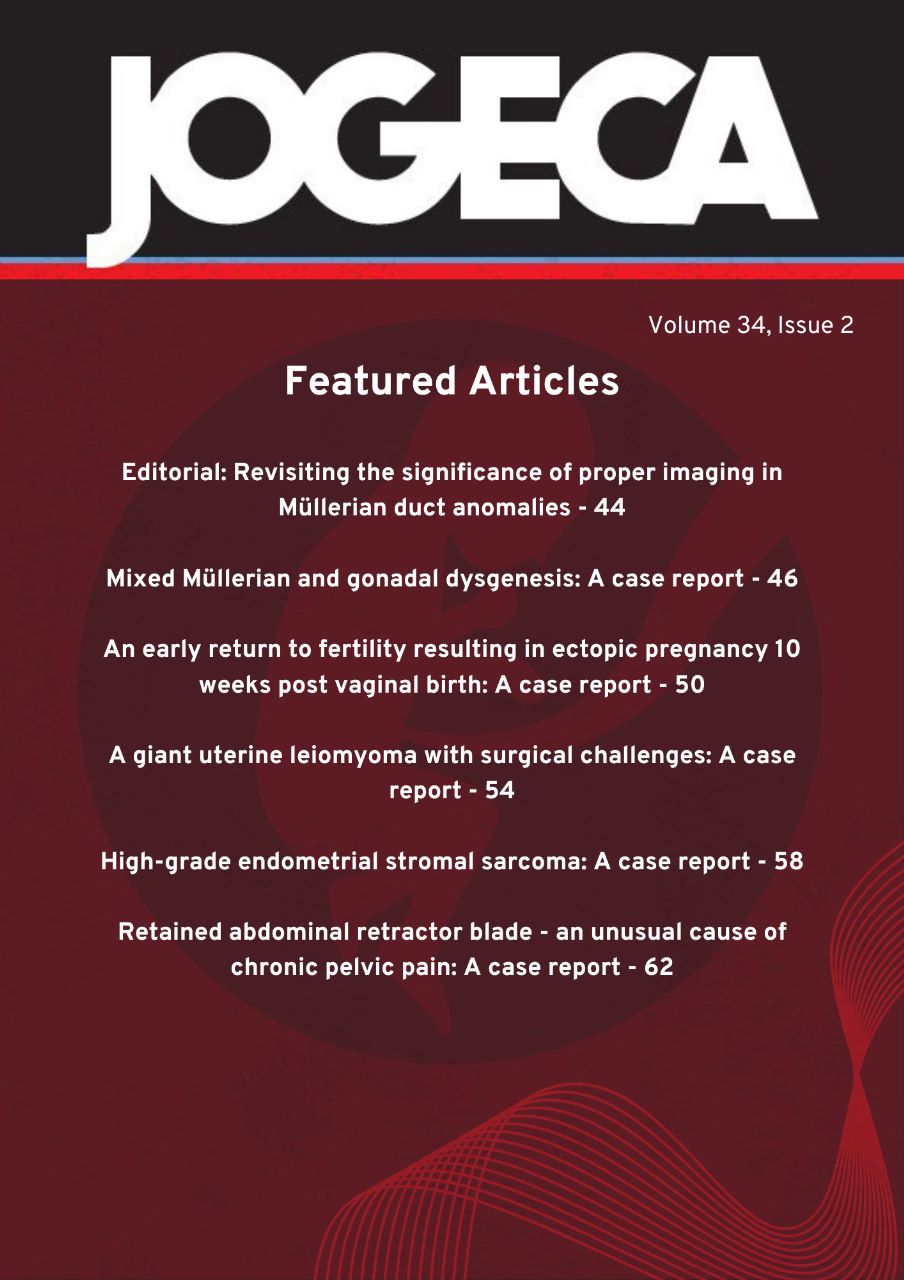Addressing the delayed diagnosis of obstructed hemivagina and ipsilateral renal anomaly (OHVIRA) syndrome for improved women health in Africa: A case series
DOI:
https://doi.org/10.59692/jogeca.v36i1.299Abstract
Background: Obstructed hemivagina and ipsilateral renal anomaly (OHVIRA) syndrome, a rare urogenital anomaly, presents significant challenges to young girls and women in Africa. As we strive to break barriers and reposition Africa in the global health architecture, the timely recognition and management of OHVIRA becomes crucial. Usingt a retrospective case series approach, we examined OHVIRA cases managed by the Pediatric and Adolescent Gynecology Unit at a Tertiary Health facility in Malaysia, between June and November 2022. The study findings have relevance for Africa because the challenges faced by young girls and women in obtaining adequate healthcare are not confined by borders.
Results: The age range of presentation, 11-25 years, mirrors the age group of concern for the African population. The time interval between symptom onset and diagnosis, spanning from 1 to 12 years, raises concerns about delayed identification. We observed that worsening dysmenorrhea, often unresponsive to analgesia, was the main presenting symptom, accompanied by complications, such as persistent vaginal discharge (12.5%), urinary retention (25%), constipation (12.5%), and pelvic masses (37.5%), which resonate with potential cases in Africa.
Conclusion: The delayed diagnosis of OHVIRA syndrome emphasizes the pressing need for proactive healthcare interventions, particularly among young girls and women in Africa. By understanding the parallels between our study and the challenges faced by young women on the continent, we can identify opportunities to improve healthcare access and address the barriers that hinder timely diagnosis and management.
Downloads
Published
How to Cite
Issue
Section
Categories
License
Copyright (c) 2024 The Authors.

This work is licensed under a Creative Commons Attribution 4.0 International License.




